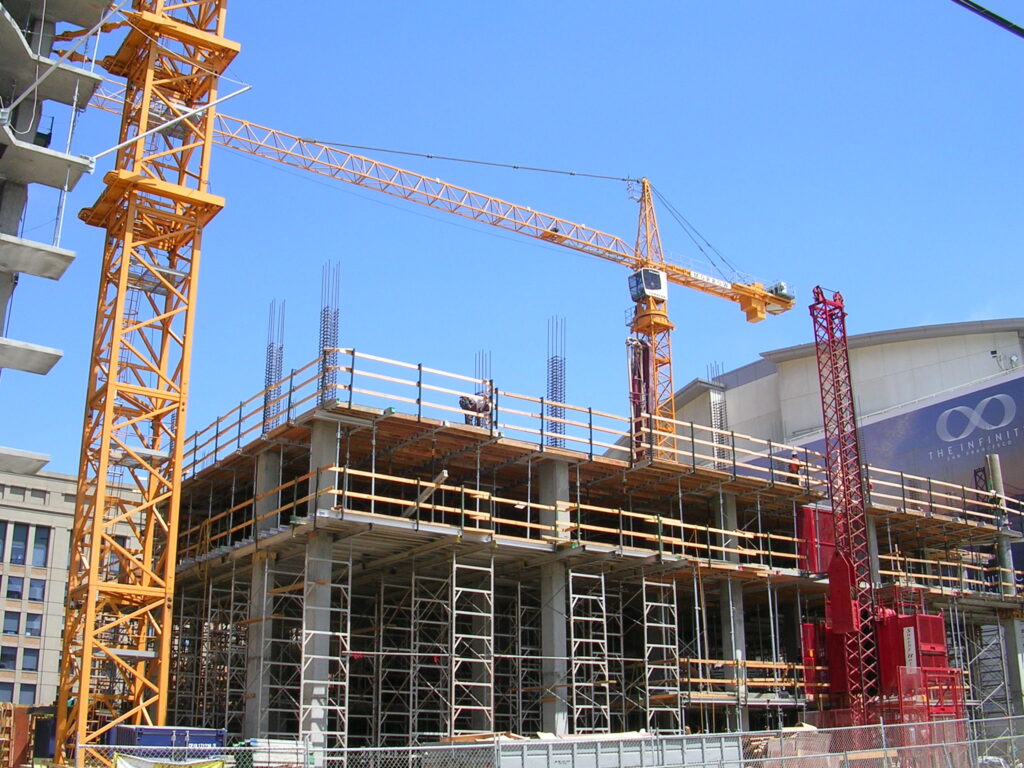COVID-19 has affected communities globally, with more than 2.5 million reported cases as of April 30—a number that is still rising. And while governments and companies globally are responding fast, much remains to be done.
In this difficult time, construction matters more than ever. From building hospitals in just a few days to donating lifesaving equipment, the industry has played a critical role in responding to the crisis and in the recovery. The industry represents 13 percent of global GDP, and unlocking currently constrained labor availability could help drive recovery while addressing our most pressing construction-related needs.
But the industry has also suffered: construction sites in many countries have shut down. And most sites that are open have faced disrupted supply chains and operational restrictions. Such disruption has been reflected in financial indexes: since February, public engineering, construction, and building materials (ECB) companies have dropped significantly more than average (Exhibit 1).

Companies that came out ahead after the financial crisis of 2008 typically moved fast and hard on productivity (including cost reduction), rapidly reallocated resources, and made bold moves (including early divestitures and acquisitions in recovery) to prepare for the future. Leaders also invested heavily in digital technologies, differentiated their portfolios and offerings, and cleaned up their balance sheets (Exhibit 2).

Organizations must think through the moves they can make today to come out ahead later. A fast return to business as usual seems unlikely for the industry: leaders must first define and prepare for what the construction industry will look like after the crisis. Seven actions can help them anticipate and adapt to the next normal.
Construction is typically much more volatile than the overall economy. Reduced economic activity results in less demand for new commercial or industrial facilities, and ambiguity further dampens investment. Loss of income and lack of consumer confidence negatively affect demand for housing construction or refurbishment. And as the value of buildings and infrastructure closely tracks GDP, the need for new construction activity is highly sensitive to GDP growth, even in longer-term models. A four-year slump, for example, could substantially reduce construction’s share of GDP above and beyond the initial contraction—even though the current crisis is not primarily related to real estate, as it was in 2008.
On the upside, unprecedented public-relief packages could not only support a rapid recovery but also be followed by public-investment programs.
The pandemic also represents a shock to supply. Both migrant and domestic construction workers may be unable to reach jobsites and will need to adhere to new on-site protocols that will reduce productivity for the foreseeable future. Some building-materials supply chains have also been interrupted, suspending production and distribution.
Signs of disruption
Even before COVID-19, ECB’s performance had been subpar compared with other industries. Stagnant productivity, low levels of digitization, and low profitability have dogged the industry for years—as have its highly bespoke building approach, fragmented ecosystem, and high share of on-site manual labor.
Indeed, recent years have signaled impending disruption. A combination of increasingly stringent sustainability requirements, rising cost pressure, labor scarcity, and new available materials, production approaches, and digital tools are forcing the industry to innovate. For example, the market share of permanent modular construction in North American real estate has grown by 50 percent from 2015 to 2018, albeit from a still-modest basis, and R&D spending among the top 2,500 construction companies has risen globally by approximately 77 percent since 2013.
A forthcoming analysis, which includes an in-depth economic evaluation and a survey of more than 400 ECB executives, also indicates that this disruption will fundamentally shift the size and distribution of industry value pools. Incumbents will need to adapt their strategies and business models to survive and thrive in the ECB industry.
Short- and long-term trends
Preliminary indications are that many of the characteristics of the COVID-19 pandemic are inducing or increasing some disruptions. In addition to immediate trends, we expect longer-term ones to accelerate as new ways of living and working become standard:
- Short term: Increased digitization. Organizations across the industry are shifting to remote ways of working. For instance, designers and engineers are relying even more heavily on digital collaboration tools such as building-information modeling (BIM). Leading engineers and contractors are using 4D and 5D simulation to replan projects and reoptimize schedules. Integrated digital-twin solutions are being developed to be used end to end, from project concept to commissioning. And contractors are looking to online channels for monitoring their employees’ well-being through apps, ordering construction materials, managing scarce resources more accurately, and maintaining cash flow.
- Short term: Rebalanced supply chains toward resilience (versus efficiency). Contractors are building inventory, securing critical materials and long-lead items, and identifying alternative suppliers.
- Long term: Augmented consolidation. Players are looking to consolidate to establish economies of scale and support investment in IT, talent, R&D, and technology. Furthermore, companies and investors will increasingly look to consolidation for much-needed resilience in their balance sheets.
- Long term: Vertical integration. Industry players are already starting to vertically integrate to increase efficiency and as a route to standardization and control of design and execution. In a post-crisis world, vertical integration (which may include a return to greater reliance on direct labor) is a potential route to greater resilience. This is the case in industrial asset classes, where equipment manufacturers are experimenting with integrating forward in the value chain and often moving from building to assembling industrial plants. And in real estate, many vertically integrated players are emerging with new business models.
- Long term: Further investments in technology or digitization and innovation of building systems. The industry faced a shortage of skilled labor before the crisis. With the prospect of rolling physical-distancing measures and restrictions on cross-border movement of labor, skilled labor shortages will become even more acute. The case for digital tools that are proven to increase productivity, such as 4D simulation, digital workflow management, real-time progress tracking, and advanced schedule optimization, will become even stronger. For similar reasons, we see an increase in R&D spending to develop new standardized building systems to speed up and automate elements of design and construction. We also expect to see more players investing in automation of on-site and back-office processes.
- Long term: Increase in off-site construction. Building in controlled environments makes even more sense in a world that requires close management of the movement and interaction of workforces. Such rationale further strengthens the case for off-site construction, beyond the existing quality and speed benefits. In fact, we expect to see contractors gradually push fabrication off-site and manufacturers expand their range of prefabricated subassemblies.
- Long term: Acceleration toward sustainability, including designs for healthier living. Governments may stimulate the economy by encouraging measures to meet carbon reduction targets—for example, by retrofitting housing stock to improve energy efficiency. Such incentives might come in the shape of a combination of policy changes and direct public investments. We expect to see a parallel shift in demand toward more sustainable buildings and communities that promote healthier lifestyles (such as access to local amenities and outdoor space, higher standards on air quality, and recycled and sustainable materials).
Source: Link



